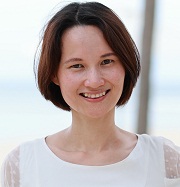
Dr. Thanh Van Hoang
Vinmec Research Institute of Stem Cell and Gene Technology, Vietnam
Title: Impact of tissue factor expression and administration routes on thrombosis development induced by mesenchymal stem/stromal cell infusions
Abstract:
Hyperactive coagulation is a critical side effect of patients treated with mesenchymal stem/stromal cell (MSC) therapy. This reaction can cause dangerous complications, such as portal vein thrombosis and pulmonary embolism. Tissue factor (TF), an initiator of the extrinsic coagulation pathway, has induced pathogenic thrombosis in animal models and patients subjected to cell transplants. Hence, it was suggested as a biomarker to predict vascular inflammation and thrombus formation after MSC infusions. Studies on FBS-cultured MSCs indicated that TF expression varies in different tissue origins and depends on many environmental factors. However, it remains elusive for MSCs cultured under xeno- and serum-free conditions. In this study, we analyzed the expression of TF and other pro- and anticoagulant genes in xeno- and serum-free manufactured MSCs. Furthermore, culture factors affecting its expression in MSCs were investigated. Finally, coagulation tests of fibrinogen, D-dimer, aPPTs, PTs, and TTs were measured in patient serum after UC-MSC infusions to challenge the connection between TF expression and MSC-induced coagulant activity. We observed that xeno- and serum-free cultured adipose tissue (AT) and UC-derived MSCs expressed the highest level of TF, followed by those from dental pulp, and the lowest expression was observed in MSCs of bone marrow origin. Environmental factors such as cell density, hypoxia, and inflammation impact TF expression, so in vitro analysis might fail to reflect their in vivo behaviors. MSCs also expressed heterogeneous levels of the coagulant factor COL1A1 and surface phosphatidylserine and anti-coagulant factors TFPI and PTGIR. MSCs of diverse origins induced fibrin clots in healthy plasma that were partially suppressed by an anti-TF inhibitory monoclonal antibody. Furthermore, human umbilical vein endothelial cells (HUVECs) exhibited coagulant activity in vitro despite their negative expression of TF and COL1A1. Patients receiving intravenous UC-MSC infusion exhibited a transient increase in D-dimer serum concentration, while this remained stable in the group with intrathecal infusion. There was no correlation between TF expression and D-dimer or other coagulation indicators. Overall, the study suggests that TF cannot be used as a solid biomarker to predict MSC-induced hypercoagulation. Local administration, prophylactic intervention with anticoagulation drugs, and monitoring of coagulation indicators are useful to prevent thrombogenic events in patients receiving MSCs.
Biography: